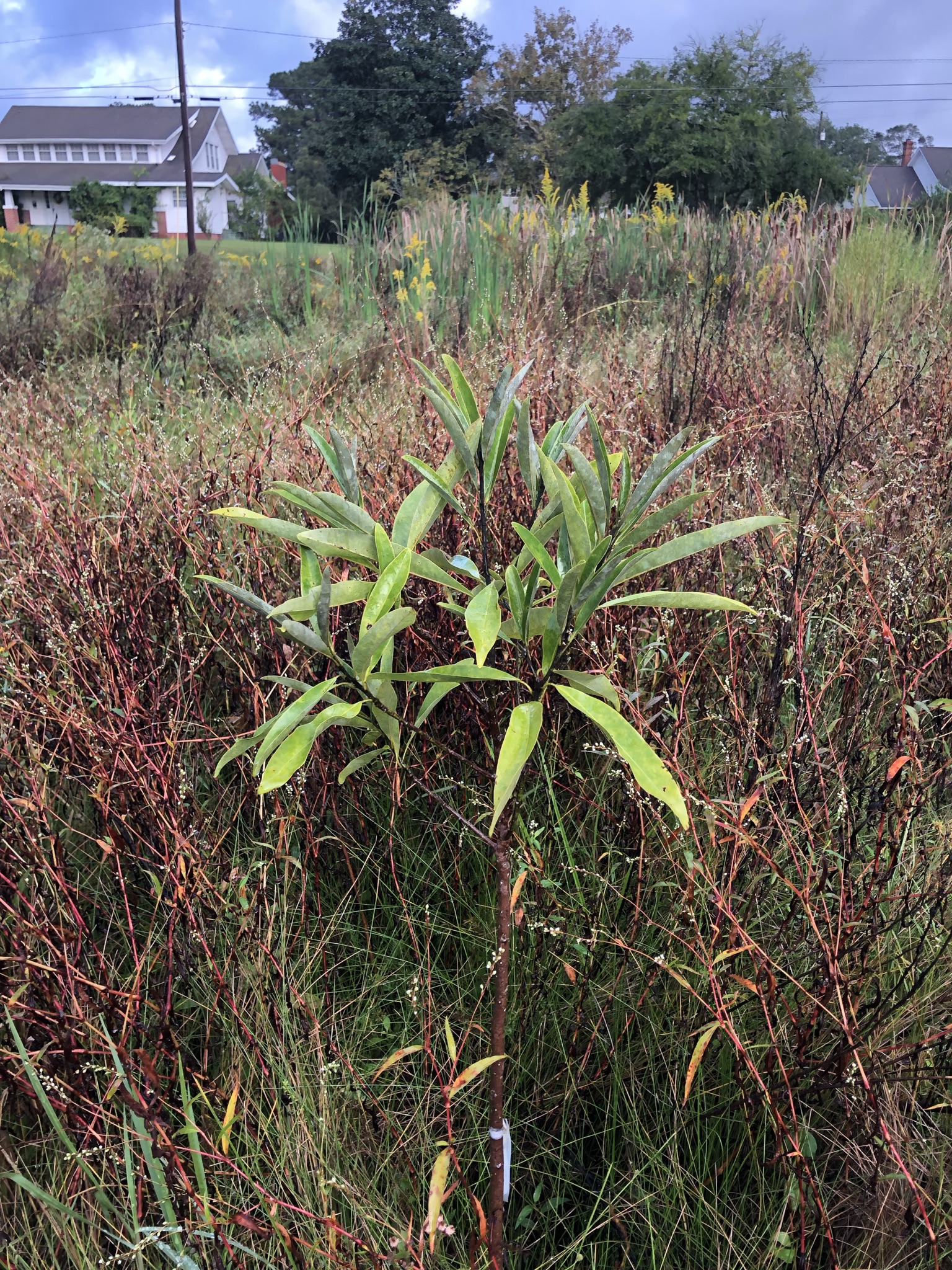It is not often that we get a front row seat to watch a wetland grow. But that is just what is available on the corner of Arthur and Dantzler Streets in Moss Point. Nearly two years have passed since this wetland was reborn and much has changed about its appearance. From what looked like a wet lawn with scattered small trees and shrubs (each sporting a pink ribbon) to what now appears to be a wild and weedy field, this evolution for me has been exciting to witness.
As an ecologist, I am well versed in the process of plant and animal succession that any abandoned site goes through over time. Typically associated with an abandoned farm field, the stages proceed from a more diverse assemblage of grasses, sedges, and herbaceous plants, through a shrub stage, to an eventual forest, that takes years to complete.
The untidy assemblage of plants seen today is just a stage on the way to the mature Bayhead Swamp and Tidal Marsh that this site is designed to become. But even now, these wetlands are helping to manage stormwater within the watershed to which they belong. This site is a great example of green infrastructure that serves to manage stormwater and improve water quality. What many folks see as “messy,” I see as progress toward better functioning wetlands.
Over the past two years, I have watched this development with glee. From what was a near monoculture of invasive Torpedograss, I have watched the many native plants reclaim the ground. Instead of a handful of species, the biodiversity of plants has increased two-fold with a balance of species, rather than a system dominated by one. Amongst this diversity of plants is an ever-growing list of native animals that also belong here, including birds, small mammals, reptiles, amphibians, insects, spiders, snails, crabs, and fishes.

And although the small trees planted two years ago are hard to spot, fear not, as they are alive and well (some doubling in height) and will continue to grow over the next few years to eventually shade out many of the “weedy” plants that you see today. But those weeds are expected in a site of this age and are welcomed. My only major task over the past two years has been to keep the Torpedograss at bay to allow the native plants to become well established – which they have done!!! Torpedograss is hard to find now.
So, what looks like a weedy mess to many is in fact a diversity of healthy native plants where only one plant once grew. That is what I see and what I hope you take the time to see as well – from the front row seat that this site provides. Thanks again to the Jackson County Board of Supervisors for sponsoring this effort with funding also provided by the Mississippi Department of Marine Resources. Thanks to the Grand Bay National Estuarine Research Reserve for the production of the Green Infrastructure video featuring this site.
Hope to see you in our great outdoors!